All about gabions

Structures made of steel mesh and filled with large fractions of stone rocks have become popular in recent decades and are used for arranging various types of territories. "Gabions" - this is the name of these multi-ton structures, which have a lot of advantages. The original appearance, environmental friendliness and simplicity of the structure make it possible to use gabions not only for construction needs, but also in landscape design, and you can assemble such a cellular structure on your own if you wish.



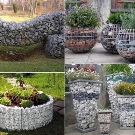

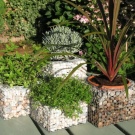
What it is?
Gabion is a volumetric structure consisting of a cellular-type steel frame, inside which a filler is located, most often in the form of large stones. Modern construction technologies provide for the use of such structures in order to strengthen the shore of the reservoir, to support the slope, road embankment or slope, to strengthen the ravine.
In landscape design, gabions are used to create tiered rocky gardens, build fences, make flower beds and other decorative structures.
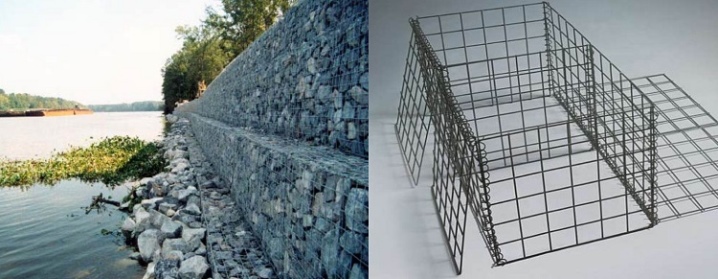
The grids filled with stones have a number of undeniable advantages:
- capable of withstanding multi-ton loads, resistant to precipitation, temperature extremes, gusts of wind;
- keep loose and free-flowing fractions of soil rocks, prone to mobility and shedding;
- have a long service life - at least 70-100 years, and over the years, the strength of the structure only increases due to the germination of the root system of plants inside it;
- the honeycomb structure is created from environmentally friendly natural materials;
- in comparison with concrete monolithic structures, gabions are much cheaper, not at all inferior in efficiency;
- various options for the shape of the frame allow you to solve any problems in the construction and decorative direction;
- during operation, the mesh structure with filling will not require additional care products;
- attractive appearance and ease of self-assembly.
Despite a lot of positive qualities, the use of large-sized mesh gabions in landscape design may not be suitable for everyone. The design is rather bulky and heavy, so it will not look aesthetically pleasing on small areas.
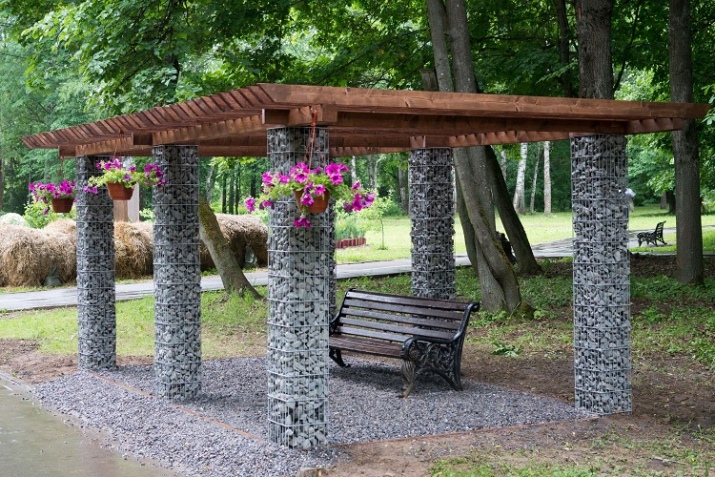

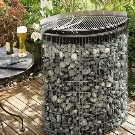
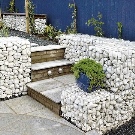
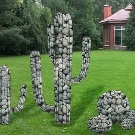
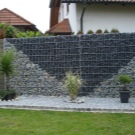
Specifications
The long service life of the mesh gabion is due to the fact that especially durable materials are used for its manufacture - metal and stone of various textures. Most often, a wire made of steel and coated with zinc is used for arranging the frame, and the density of the coating of such a material is in the range from 250 to 280 g / sq. m. Such a wire is 5 times stronger than the one used for weaving the well-known chain-link mesh. Instead of anti-corrosion galvanizing, the gabion wire can have a protective layer of PVC material, while its thickness can be from 2 to 6 mm.
Containers in the form of a strong mesh have a high degree of reliability, since they are manufactured using the method of double twisting of the wire. The cell of such a mesh cell has a regular shape in the form of a polygon, which looks like a honeycomb.
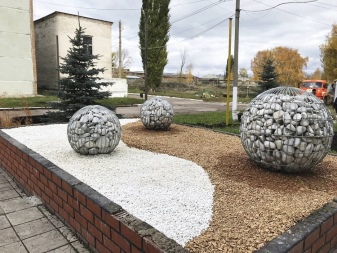
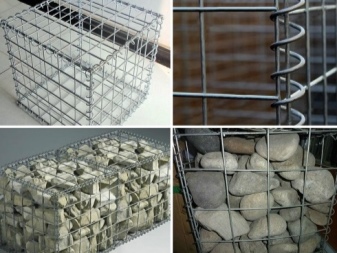
For the device of the gabion, stones are laid in the wire mesh, the size of which significantly exceeds the parameters of the cells. In large structures, segmentation is provided into compartments, which prevent the protrusion of heavy stones when filling the mesh.
The strength of the mesh structure of the gabion is due to their certain degree of flexibility, which is not lost even in winter. The fact is that under external influences on the structure, it can stretch or bend a little, but after the end of such an impact, it regains its original shape. If a concrete monolith gets into such conditions, then it does not withstand the loads and splits.
For this reason, embankments near roads and the banks of reservoirs began to be strengthened with nets with a large stone, since such retaining devices are much more reliable and durable than other materials.
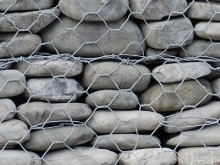

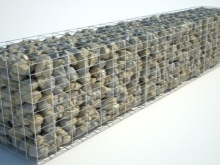
Where are they used?
Gabions most often perform the function of bank protection - with their help, the bank of a river or reservoir ceases to crumble or be washed away by water. With the use of these structures, artificial waterfalls are equipped, and gabions are also used for the construction of protective dams. Water does not have the ability to erode mesh products and cannot easily pass through them in any direction.
The construction of roads also did not bypass the use of a system of stone and mesh, which is needed to strengthen slopes and slopes from destruction of soil rocks. In the arrangement of the local area, mesh stony structures are used to make a gabion fence, to overlay the facade of a house, to make a foundation for small buildings.
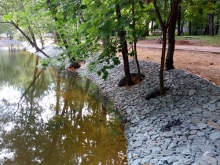
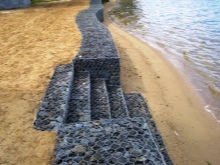

The main task, which is solved with the help of nets filled with stones, is to protect soil masses from destructive collapse. For this reason, the designs are used in the following cases:
- arrangement of water overflow or throughput hydraulic structures;
- strengthening the bearing supports of bridges and overpasses from destruction or erosion of the soil;
- decorating the landscape space;
- creation of a bed of railways and highways;
- strengthening the soil from erosion and landslides, protecting roads from rockfall.
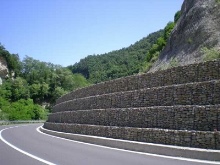
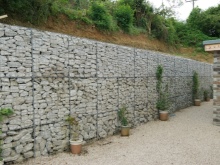
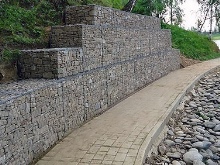
In the field of landscape design, gabions are used for:
- decorative arrangement of garden paths, lawns, flower beds;
- functional division into zones of large areas of the site;
- fulfillment of the protective function;
- creation of small architectural structures in the form of arches or terraces that can withstand significant weight loads;
- decorative decoration.
Unlike concrete structures, the gabion can be installed all year round, regardless of weather conditions. The material has a rather attractive appearance and is harmoniously combined with the natural landscape.
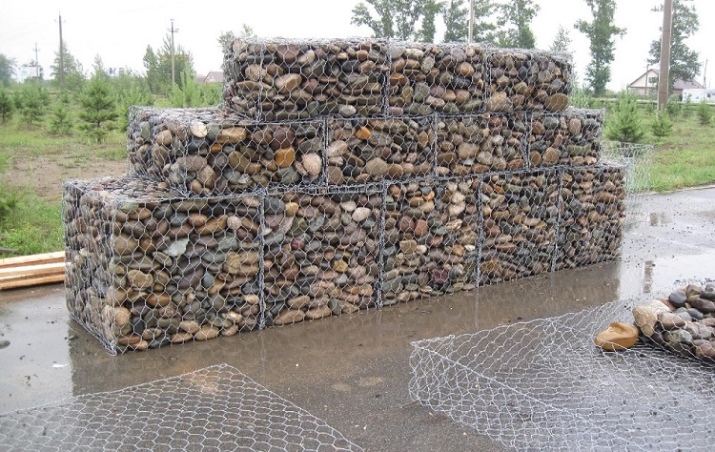
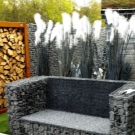




Views
Bulk-type mesh structures have various modifications. Most common Jumbo models, which represent a rectangular volumetric system with a reinforcing panel. In landscape use, gabions can look like figurines of people, animals, fish, flowerpots, and so on. Gabions used for construction purposes are divided into 3 types.
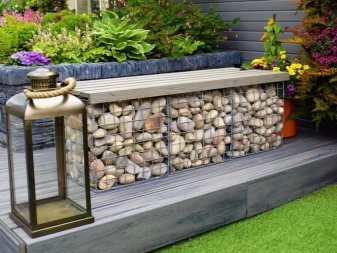

Box-type
The structure is in the form of a rectangle made with durable double weaving technique wire. The cells of this design have a hexagonal shape, which ensures the density and reliability of the woven fabric., since the pressure of the mass of stones is distributed on all sides of the rectangular structure with the same intensity. Even if the wire breaks in some place, double twisting will prevent it from quickly spreading and destroying the mesh.
The dimensions of box gabions can be any, most often their length is chosen from 1.5 to 4 m, width - 1 m, and the height can be from 1 m or more. If the structure exceeds 2 m in length, then zoning in sections is performed inside it or special reinforcing membranes are installed that increase the strength of the product.In addition to weaving, the support structure for the stones can be made from rods connected to each other by means of electric welding. In this case, the configuration of the cells has a clear rectangular shape.


Flat
Often gabions, flat in shape, are called "mattress-mattress". They got their name because the length of the structure can reach 5 or 6 m, and the width is 1-2 m.But at the same time, the height of the structure does not exceed 20-30 cm.To create strength and maintain shape, special partitions-membranes are placed inside the cellular structure ...
With the help of a flat gabion, you can equip a landscape of any configuration, and these products are also used as a foundation, on which box-shaped structures are then installed - this approach allows you to more evenly distribute the load and increase the stability of the structure. Flat gabions can be used to equip terraces on the slopes. Unlike the box type, the flat design requires less filler and is lightweight.
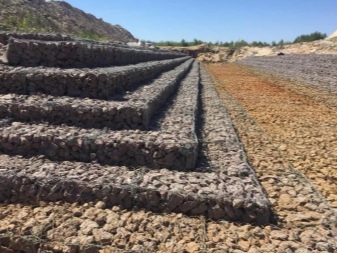
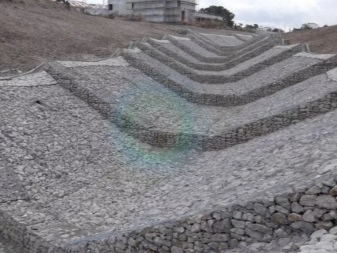
Cylindrical
This design is also called "gabion bag", since it has the shape of a roller or cylinder, with fastenings in the form of a pint on the sides, which are carried out using a wire. Outwardly, such a structure resembles a wrapped candy.
The length of the cylinder can be 2 or 4 meters, and the diameter is chosen from 70 cm to 1 m. Membrane partitions are not installed inside such structures, therefore the structure has a certain flexibility, which allows it to be laid on an uneven surface of a complex landscape relief.
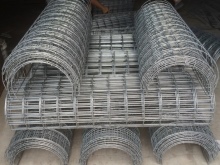
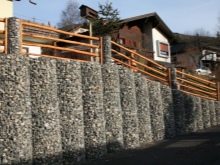

What kind of mesh is suitable for gabions?
For the manufacture of the mesh structure of the gabion, it is customary to use wire made of extra strong types of steel, treated with zinc or PVC, or stainless steel. Wire braiding is performed using the double twisting method. In some cases, for private use, a galvanized chain-link mesh, as well as a welded masonry and reinforcing grille, can be used.
The wire coated with a polymer layer is used for the manufacture of gabions, which are used for hydraulic structures, as well as for structures in contact with salt sea water. PVC coating is applied to wires with a diameter of 2 mm or more.
Any mesh for a gabion must be strong and hold its shape well after filling the structure with stones.
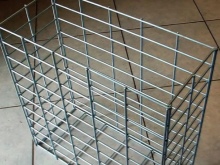
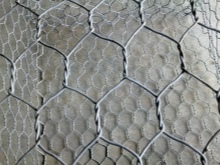
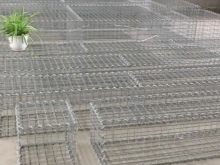
Choosing a stone for filling
Quarry stone, crushed stone, rubble stone, broken brick are most often used as a filler for the finished gabion. The decorative appearance of the gabion depends on its filler, and to make the product look attractive, the mesh can be filled with:
- gray, gray-black, gray-pink granite;
- crystalline types of shale;
- natural quartzites;
- porphyrite;
- basalt;
- various shades of sandstone.
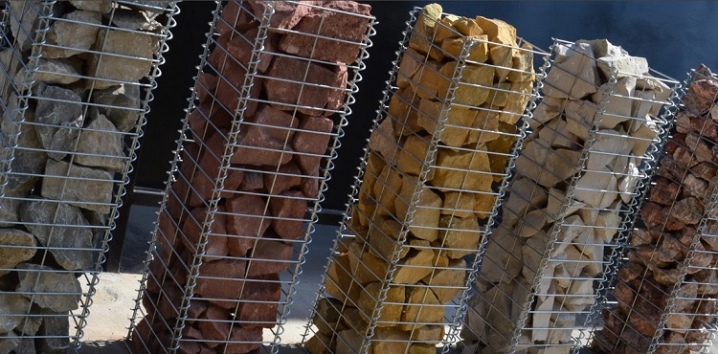
The shape and size of the stone also plays an important role in the design. To create a decorative composition, gabions are filled with:
- rounded boulders;
- rocks with chipped edges;
- river or sea pebbles of large caliber;
- large plain or mixed crushed stone.
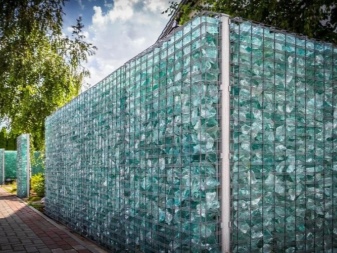
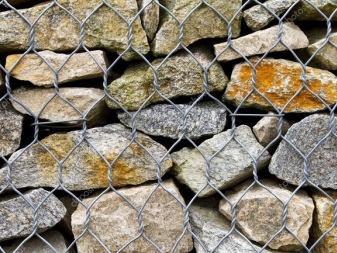
In addition to stone rocks, gabions can be filled with other interesting fillers:
- glass balls or colored pieces of glass;
- chopped wooden round timber;
- broken tiles or slate;
- scraps of metal pipes;
- artificial stones.
When choosing a filler for a mesh structure of a gabion, it should be remembered that it is important not only to beautifully place the components inside, but also to observe the size of the filler, which should be 30-50% larger than the dimensions of the cells.
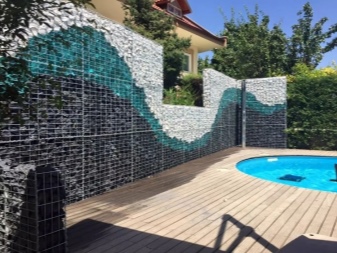
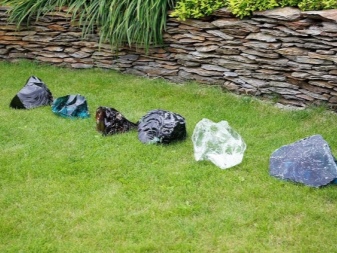
How to do it yourself?
Installation of a gabion on a site can be done by hand. Since gabion structures are heavy, they are laid immediately at the place of planned placement, observing the maximum longitudinal slope of the relief. The easiest way to assemble such structures is from a masonry mesh, tied with a wire in the form of a spiral, passed between the cells. Step-by-step instructions for performing such a task are presented below.
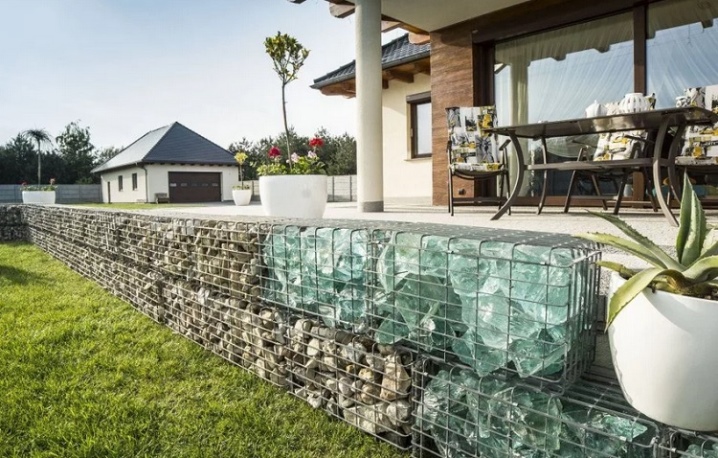
Preparation of materials and tools
To assemble and fill the gabion, you will need to prepare tools and accessories:
- metal grid;
- reinforcement for the frame;
- staples made of wire or spirals for connecting the walls;
- stapler;
- ticks;
- geotextile;
- reinforcing bars with a diameter of 10 mm or posts;
- filling stones;
- shovel.
In some cases, for the manufacture of a structure, a welding machine may be needed to connect the reinforcing bars to each other.
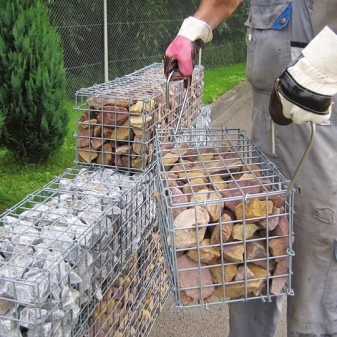
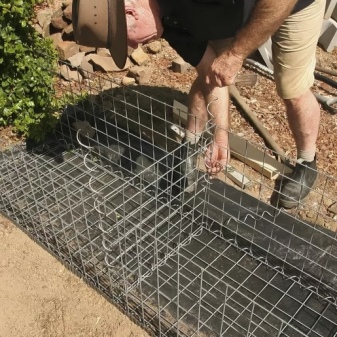
Manufacturing steps
The assembly, filling and installation of the gabion takes place immediately on the spot, so all the markings and the selection of the area for installation are made in advance. Stages of work:
- the surface of the soil where it is planned to install the gabion must be cleaned of weeds, level the base, remove part of the soil to make a 20 cm thick sand pillow, which will need to be carefully compacted;
- to prevent the subsequent growth of weeds under the gabion and wash out the soil, geotextiles are placed under the lower edge of the structure, and a small groove is made nearby for the outflow of water;
- cut out the mesh to the required dimensions and sew it with wire weaving or using staples;
- first, the lower surface of the gabion is formed, and the sides of the structure are already added to it;
- if the size of the structure is large, separating membranes cut from the same mesh must be placed inside it;
- the upper side of the rectangular structure is left unstitched to fill the gabion with stones;
- when the frame is ready, for its strength, the structure is fixed with anchors or reinforcement with a diameter of 10 mm;
- the finished mesh frame is completely filled with stones and its upper wall is sewn up.
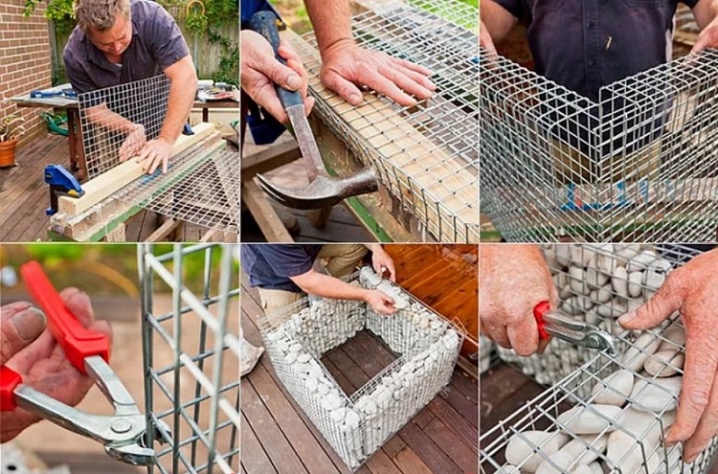
Laying stones or any other filler will require compliance with some rules:
- the gabion is filled only after it has been leveled in a permanent place;
- large stones are placed along the edges of the structure, the central part is filled with smaller fractions;
- if the filler has a homogeneous structure and dimension, then the filling of the gabion is done in layers, with each layer tamped;
- if several gabions are to be stacked on top of each other in the form of tiers, then the bottom row should consist of the largest stones in size, in addition, the lower tiers are filled 7-10 cm above the edge of the structure, taking into account the subsequent shrinkage under the weight of the above lying rows;
- if you need to lay small stones that fall out of the cells, then they are wrapped in geotextiles and placed in the center of the gabion, filled from all edges with larger fractions - this way you can save on expensive high-quality material.
In order for the masonry to be even and not to displace the stones, they must be laid in layers of 20 cm. Each layer must be compacted and only then proceed to the next layer.
For this reason, you should not rush to tightly fix the top cover of the gabion - this is done last, when all the filling stages have already been completed.

Examples of use in landscape design
The gabion structure is not only a durable protective device, but also serves as a decorative role. Such an extraordinary structure can be used in the country or in a private courtyard. A large stone, assembled in a steel frame, looks impressive, while creating the impression of a natural and a certain fundamental structure of the structure. Gabion can frame a pool, fireplace, flower garden, barbecue and so on - there are a huge number of applications for this design.
- Garden street sculptures look non-trivial and attractive, made using the technique of a mesh wicker structure, filled with stones of uniform size and texture.Such decoration of the territory will not go unnoticed and will attract general interest and attention.


- Gabion can replace a garden flowerpot. A stylized flower bed will not be covered with moss and weeds will not grow on it. Such a flowerpot made of stones can be placed in any corner of the garden or placed next to the porch. The decoration is unusual and effective.

- With the help of large cellular gabions, it is quite possible to build magnificent garden arches.that will look presentable all year round - they are not afraid of winter frosts and summer rains. Such an arch will stand on the site for more than a dozen years and will not need repair or painting.
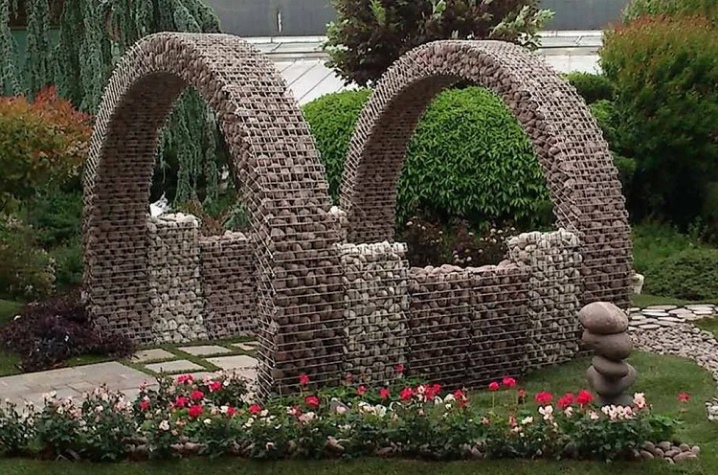
- An interesting idea for decorating a garden fountain can be a gabion base with large boulders. The stone in combination with a moving stream of water looks tempting and spectacular. Such an original fountain will harmoniously complement the look of the local recreation area and make it unique in its own way.

- Using large stones enclosed in a steel mesh can be a good idea for setting up a fence. The weight of the gabion structure is large enough, therefore, the protective structure will have absolute stability and reliability. Over time, the fence does not need to be painted, repaired or strengthened - the structure attracts with its fundamental nature and simplicity.

- In some cases, gabions can be successfully used as a dividing wall for space zoning. Such a decorative fence will not look out of place, since natural stone is very successfully combined with green vegetation, complementing and emphasizing its beauty.
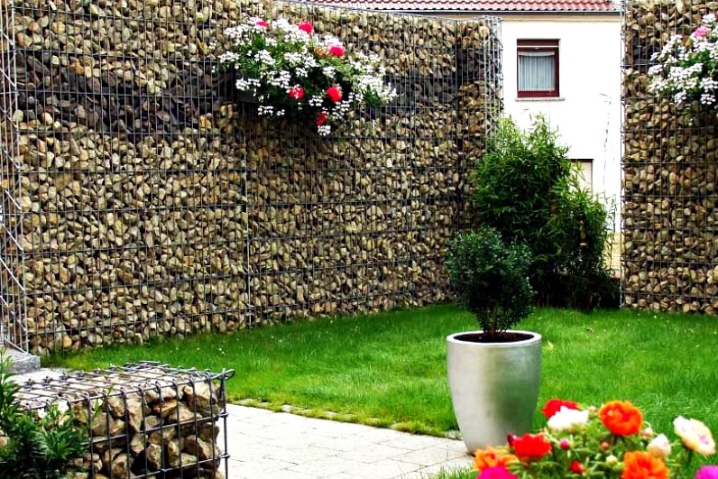
For information on how to make a gabion with your own hands, see the next video.






























































The comment was sent successfully.